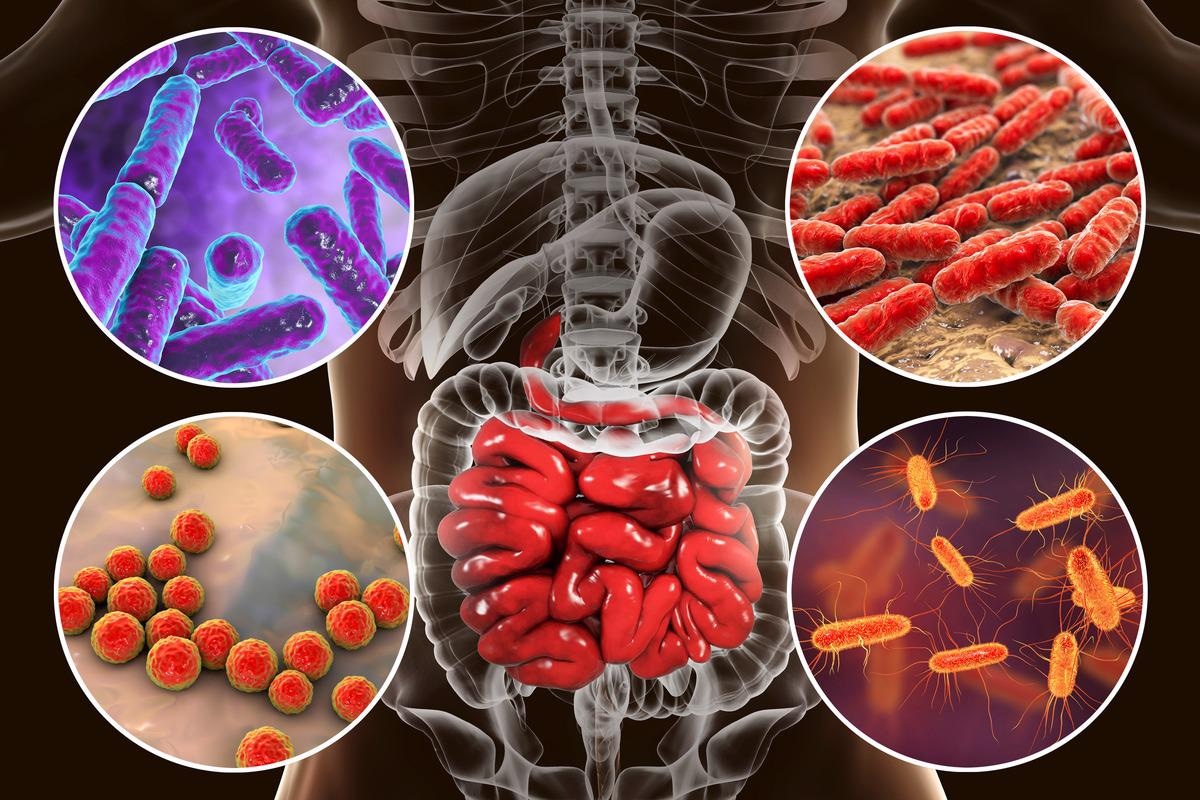Study explores whether gut bacteria profiles differ by race and insulin sensitivity status
There are currently very few studies into the differences in gut microbiomes between races, despite significant differences between black and white individuals' average insulin resistance, BMI, and rates of obesity. As diabetes rates continue to rise, the difference becomes increasingly important. While the number of microbiome studies has risen, relatively few have focused on insulin sensitivity or gut health, instead tending to relate more to fertility and reproductive differences. In the present study published in PLOS ONE, researchers designed and undertook a unique study to investigate these interactions further.
 Study: Differences in gut microbiome by insulin sensitivity status in Black and White women of the National Growth and Health Study (NGHS): A pilot study. Image Credit: Kateryna Kon/Shutterstock
Study: Differences in gut microbiome by insulin sensitivity status in Black and White women of the National Growth and Health Study (NGHS): A pilot study. Image Credit: Kateryna Kon/Shutterstock
The study
The researchers gathered data from 320 participants from the National Heart, Lung, and Blood Growth and Health Study. Participants were eligible for inclusion in the study if they were not currently pregnant, had not recently been pregnant or given birth, were not currently living abroad, and were not institutionalized or in prison. Blood draws were performed for the measurement of glucose and insulin. All women provided fecal samples for analysis.
Samples were lysed by bead-beading, and DNA was extracted using guanidine thiocyanate silica column-based purification. Univariate analysis was used to determine unequal distribution for BMI, fasting glucose and insulin, and HOMA-IR (insulin sensitivity). Wilcoxon test was used to test for differences between these groups in outcomes, and the age difference was determined by a general linear model. The chi-squared test determined insulin sensitivity status distribution differences between races.
When examining microbiota analyses, they focused on identifying the differences in gut health based on the relative abundance of different phyla and families of bacteria, using phyloseq to manipulate and analyze the data. Alpha diversity was used to check the diversity within samples and measured using either the Shannon Index, Simpson, or Chao, with each dataset rarefied to 10,000 reads, with non-normal distributions log-transformed. A general linear model was used to determine differences in alpha diversity and taxonomy by race, and BMI was included as a covariate in all models.
The scientists detected seven phyla within the participants, Actinobacteria, Firmicutes, Bacteroidetes, Fusobacteria, EpisolonBacteraeota, Verrucomicrobria, and Proteobacteria, with the most common samples Firmicutes and Bacteroidetes, at 55% and 34% of total bacteria in all participants. The researchers found no significant differences in the abundance or ratio of these bacteria between the different races. Including HOMA-IR in this analysis did not change the outcome.
However, actinobacteria did show different proportions, with black women showing approximately double the proportion compared to white women, with the differences remaining significant after adjusting for insulin sensitivity. Verrucomicrobia and Proteobacteria were represented at an abundance of 3.1% and 3.6%, respectively. While there were no significant differences between the races for Proteobacteria proportions, Verrucomicrobia showed a race and insulin sensitivity status interaction, with black women with insulin resistance showing a four-fold increase compared to white women with insulin resistance. Fusobacteria and Epsiolobacteria showed no significant differences.
The researchers did not observe any significant differences at the genus level, so this was not included in the final analysis. At the family level, no differences were seen with race alone. Still, there were significant interactions between race and insulin sensitivity for the families Clostridiales and Lachnospriacae, with twice the abundance of Clostridiales Family XIII in black women with insulin sensitivity compared with white women with insulin sensitivity. Unfortunately, this difference was not significant. The scientists found no differences between races in insulin-resistant women.
Differences in beta diversity by race did not show any significance at the phylum level, but at the family level, differences could be seen. When insulin sensitivity was included in the model, only insulin-resistant women showed significant differences in beta diversity.
The conclusion
The authors highlight that few other scientists are examining the differences between gut microbiota between white and black women, and none have included insulin sensitivity in their analysis. They successfully showed that the gut microbiome could be seen to differ both by race alone and by insulin sensitivity.
They point to their findings of a greater abundance of Actinobacteria in black women as an example of the study's importance. This could suggest different mechanics for the interactions of Actinobacteria and insulin sensitivity in white and black women. While more information is needed, these findings could help inform future research into obesity, insulin sensitivity, and medical differences between races, potentially allowing for better-targeted medication in the future.
-
Price, C. et al. (2022) "Differences in gut microbiome by insulin sensitivity status in Black and White women of the National Growth and Health Study (NGHS): A pilot study", PLOS ONE, 17(1), p. e0259889. doi: 10.1371/journal.pone.0259889. https://journals.plos.org/plosone/article?id=10.1371/journal.pone.0259889
Posted in: Medical Science News | Medical Research News | Disease/Infection News
Tags: Bacteria, Blood, Diabetes, DNA, Fasting, Fertility, Glucose, Guanidine, Heart, Insulin, Insulin Resistance, Microbiome, Obesity, Research

Written by
Sam Hancock
Sam completed his MSci in Genetics at the University of Nottingham in 2019, fuelled initially by an interest in genetic ageing. As part of his degree, he also investigated the role of rnh genes in originless replication in archaea.
Source: Read Full Article
